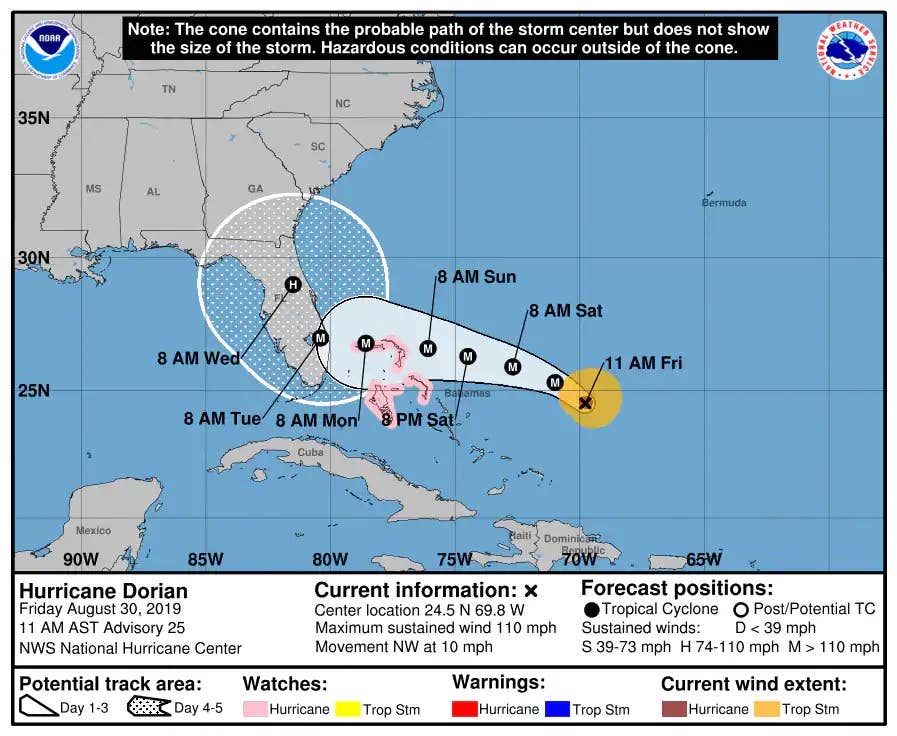
Dorian’s projected path still holds unknowns for the state of Florida and Atlantic Coast on September 3. National Weather Service
Hurricane Dorian gained strength on Friday and continued its trajectory towards Florida, as pilots, aircraft owners, and rescue organizations made preparations for the storm.
The storm stalled over the Bahamas, causing epic destruction in its wake.
The FAA sent out an alert on Thursday to general aviation pilots, urging them to monitor the weather using the Leidos portal and keeping an eye on the temporary flight restrictions that will inevitably ensue as the storm potentially makes landfall somewhere along Florida's east coast or further north.
Other sources of weather and hurricane update information can be found on the main NWS hurricane page (hurricanes.gov) and by following the specific National Weather Service Twitter and Facebook accounts, such as @NWSMiami and @NWSMelbourne.
Pilots and aircraft owners who have not yet moved aircraft out of the storm's predicted path may find it difficult to do so as the storm moves towards the coast. AOPA has guidance on how to protect an aircraft to follow both in the short term and in an owner's long-range planning.
Rescue organizations such as Operation Airdrop are watching the storm's track to determine at which airports to stage relief missions—those bases typically need to be well outside of the storm's path to avoid working from one that has suffered damage, yet within a 30- to 60-minute flight to minimize time and costs. The organization, based in Texas, put out a call for volunteers; visit the website operation-airdrop.com for more details.

Sign-up for newsletters & special offers!
Get the latest FLYING stories & special offers delivered directly to your inbox






